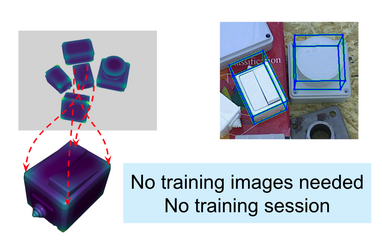Human Motion Deblurring using Localized Body Prior
Jonathan Samuel Lumentut (Inha University), Joshua Santoso (Inha University), In Kyu Park (Inha University)*
Keywords: Low-level Vision, Image Processing
Abstract:
In recent decades, the skinned multi-person linear model (SMPL) is widely exploited in the image-based 3D body reconstruction. This model, however, depends fully on the quality of the input image. Degraded image case, such as the motion-blurred issue, downgrades the quality of the reconstructed 3D body. This issue becomes severe as recent motion deblurring methods mainly focused on solving the camera motion case while ignoring the blur caused by human-articulated motion. In this work, we construct a localized adversarial framework that solves both human-articulated and camera motion blurs. To achieve this, we utilize the result of the restored image in a 3D body reconstruction module and produces a localized map. The map is employed to guide the adversarial modules on learning both the human body and scene regions. Nevertheless, training these modules straight-away is impractical since the recent blurry dataset is not supported by the 3D body predictor module. To settle this issue, we generate a novel dataset that simulates realistic blurry human motion while maintaining the presence of camera motion. By engaging this dataset and the proposed framework, we show that our deblurring results are superior among the state-of-the-art algorithms in both quantitative and qualitative performances.
SlidesLive
Similar Papers
Multi-View Consistency Loss for Improved Single-Image 3D Reconstruction of Clothed People
Akin Caliskan (Center for Vision Speech and Signal Processing - University of Surrey)*, Armin Mustafa (University of Surrey), Evren Imre (Vicon), Adrian Hilton (University of Surrey)

Learning 3D Face Reconstruction with a Pose Guidance Network
Pengpeng Liu (The Chinese University of Hong Kong)*, Xintong Han (Malong Technologies), Michael Lyu (The Chinese University of Hong Kong), Irwin King (The Chinese University of Hong Kong), Jia Xu (Huya AI)

3D Object Detection and Pose Estimation of Unseen Objects in Color Images with Local Surface Embeddings
Giorgia Pitteri (Université de Bordeaux, LaBRI)*, Aureélie Bugeau (University of Bordeaux), Slobodan Ilic (Siemens AG), Vincent Lepetit (Ecole des Ponts ParisTech)
